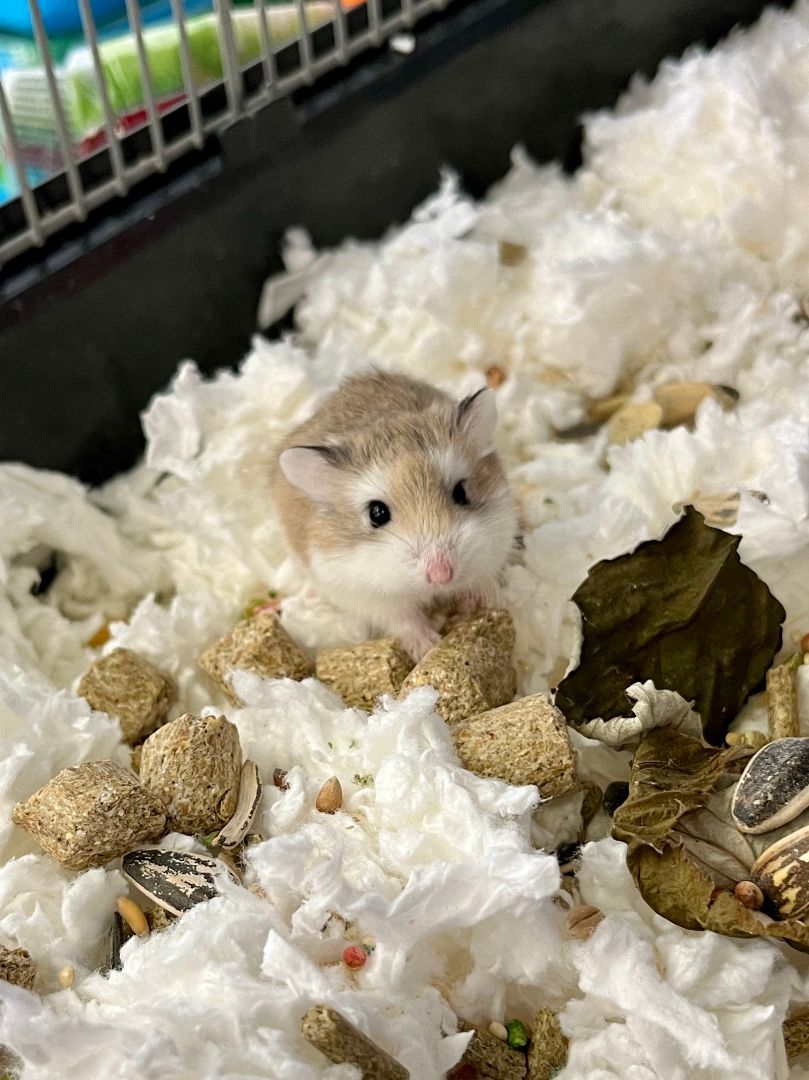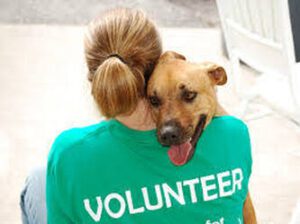When it comes to welcoming a new pet into your home, there’s nothing quite as exhilarating as the moment you decide to adopt. If you’ve set your heart on a Roborovski dwarf hamster, you’re in for an adventure. These tiny, active creatures can bring immense joy and companionship to your life. But before you dive in, let’s talk about the important details to ensure you’re fully prepared for the responsibility that comes with pet ownership.
Key Takeaways
-
Roborovski dwarf hamsters are social, active pets that require a specific habitat to thrive.
-
Adoption costs can vary, but expect initial expenses for habitat setup and ongoing costs for food and care.
-
Rescue groups offer the opportunity to adopt and provide a home to a hamster in need.
-
Understanding a Robo dwarf hamster’s behavior is key to proper handling and bonding.
-
Roborovski dwarf hamsters can live alone or in pairs, but their social needs must be carefully considered.
Embarking on the Journey with a Roborovski Dwarf Hamster
Adopting a Roborovski dwarf hamster, often just called a Robo, is the start of a special journey. These are the smallest of the dwarf hamsters, and they’re known for their sandy fur and lightning-fast movements. Before you bring one home, it’s crucial to understand what makes them unique and how to cater to their needs.

“Hamster for adoption – Robo Dwarf …” from www.petfinder.com and used with no modifications.
The Joy of Adopting Your New Tiny Friend
Adopting a Robo dwarf hamster means committing to their care for their entire lifespan, which can be up to three years. They’re nocturnal, which means they’re most active at night. During the day, they love to burrow and hide. Watching your Robo zip around their habitat or spin tirelessly on their wheel can be both entertaining and endearing.
Understanding the Costs: Initial and Ongoing
Before you adopt, it’s essential to consider both the initial and ongoing costs. Initially, you’ll need to invest in a proper habitat. A spacious cage with plenty of room for exercise is a must, and you should expect to spend between $30 and $100 on a suitable home for your Robo. Besides that, you’ll need to purchase bedding, a wheel, a water bottle, and hiding places, which can add another $50 to $100.
Ongoing costs include high-quality hamster food, fresh vegetables, and occasional treats. Bedding will need to be replaced regularly, and you’ll also want to budget for any veterinary care your hamster might need. Monthly, you might spend around $10 to $20 on food and bedding.
Finding Your Perfect Robo Dwarf Hamster Companion
Once you’ve decided to adopt a Robo dwarf hamster, the next step is finding your new companion. While pet stores are an option, I urge you to consider rescue groups. These organizations often have hamsters that need a second chance at a loving home.
Why Consider a Rescue Group for Adoption?
Rescue groups are dedicated to taking in unwanted or abandoned animals and finding them new homes. By choosing to adopt from a rescue, you’re not only giving a hamster a much-needed home but also supporting the rescue’s efforts to help more animals. You’ll also have the benefit of adopting a hamster that has been observed by knowledgeable caregivers who can provide insights into their personality and health.
Evaluating the Cost: How Much to Budget for Your Hamster
The adoption fee for a Robo dwarf hamster from a rescue group can range from $10 to $20. This fee often includes a health check and sometimes even a starter kit with some basic supplies. However, the main expenses will come from setting up their habitat and ongoing care. Remember, a happy hamster is a healthy hamster, and investing in their well-being is worth every penny.
Setting Up a Cozy Habitat
Creating the perfect home for your Robo dwarf hamster is both an art and a science. They need a secure and comfortable environment that mimics their natural habitat to the extent possible. Start with a cage that’s at least 20 inches long and 12 inches wide. The bigger, the better, as Robos are active and need space to roam. Glass aquariums or tanks with a mesh cover can work well, as they prevent these tiny escape artists from squeezing through bars.
Inside the cage, you should provide a deep layer of bedding—paper-based or aspen shavings are good choices because they’re safe and absorbent. Avoid cedar or pine shavings, as the oils they contain can be harmful to your hamster. Scatter the bedding thickly on the bottom to allow for burrowing, which is a natural and comforting behavior for them.
The Low-Down on Diet and Nutrition
Roborovski dwarf hamsters have specific dietary needs that are essential for their health. They are omnivores, which means they eat both plant and animal-based foods. A good quality hamster pellet should make up the bulk of their diet, supplemented with small amounts of fresh fruits and vegetables. Some safe options include carrots, spinach, apples, and cucumbers. Remember, moderation is key—too much fresh food can lead to diarrhea.
-
Provide a balanced diet with a high-quality hamster pellet as the base.
-
Supplement with small, bite-sized pieces of fresh produce.
-
Offer occasional treats like mealworms or a tiny bit of hard-boiled egg.
-
Always have fresh water available in a bottle with a sipper tube.
It’s also important to note that Robos have tiny mouths and stomachs, so food and treats should be given in appropriate, small sizes to prevent choking or overfeeding.
Decoding Roborovski Behavior and Temperament
Understanding the unique behavior and temperament of your Robo dwarf hamster is essential for building a strong bond. Robos are known for being very active and quite speedy. They can be more skittish than other hamster breeds, which means they might take longer to tame and might not enjoy being handled as much. Patience and gentle, consistent handling will help your Robo become more comfortable with you over time.
Do Robo Dwarf Hamsters Enjoy Cuddles?
It’s a common question: do Robo dwarf hamsters like to be held and cuddled? The truth is, Robos are generally not as cuddly as some other pets. Due to their small size and quick movements, they can become easily stressed if handled too much. It’s best to interact with them in a way that respects their independence and comfort level. You can encourage them to climb onto your hand with treats, but always be mindful of their need for space and security.
The Essentials of Hamster Handling
When it comes to handling your Robo, there are some key points to keep in mind. First, always wash your hands before and after handling to prevent the spread of germs. Approach your hamster gently, without making sudden movements. Let them sniff your hand first and get used to your scent. If they seem receptive, scoop them up with both hands, making sure to support their entire body. Never pick up a hamster by the tail or scruff, as this can cause injury and stress.
Dwarf Hamster Dynamics: Should They Live in Pairs?
Whether or not to keep Robo dwarf hamsters in pairs is a decision that requires careful consideration. In the wild, Robos live in family groups and can enjoy the company of others. However, in captivity, the situation is a bit more complex. Compatibility depends on the individual hamsters’ personalities, and even siblings can sometimes fight if their space is too cramped or if they’re competing for resources.
If you do choose to keep a pair, it’s often best to adopt two that are already living together peacefully. Monitor their interactions closely, especially in the beginning, to ensure they are getting along.
Introducing a new hamster to an existing one can be tricky and should be done with caution. Here are some steps to help the process go smoothly:
-
Quarantine the new hamster for at least a week to ensure it’s healthy and to prevent the spread of disease.
-
Place their cages side by side so they can get used to each other’s scent.
-
Swap bedding between the cages to further familiarize them with each other.
-
Introduce them in a neutral space, like a clean bathtub or playpen, with supervision.
-
If they show signs of aggression, separate them immediately and try again later.
It’s important to have a backup plan in case the hamsters do not get along, which could mean setting up a second habitat.
Remember, every hamster is an individual, and what works for one may not work for another. Paying close attention to your hamsters’ behavior and providing for their needs will help ensure a happy, healthy life for your new furry friends.
FAQs: Everything You’re Curious About
As you embark on the delightful journey of adopting a Roborovski dwarf hamster, it’s natural to have a bundle of questions. Let’s dive into some of the most common queries to help you become the best pet owner you can be.
What is the Lifespan of Roborovski Hamsters?
Roborovski dwarf hamsters, while tiny, have a decent lifespan for such small creatures. On average, they live about 3 to 3.5 years, although some may reach up to 4 years with excellent care. Factors like genetics, diet, and environment play a significant role in their longevity.
-
Average lifespan: 3 to 3.5 years
-
May live up to 4 years with optimal care
-
Genetics, diet, and environment affect longevity
To ensure a long and happy life for your Robo, provide a nutritious diet, a clean habitat, and regular, gentle interaction.
Can Roborovski Hamsters be Trained?
While Roborovski hamsters are not trainable in the same way dogs are, they can learn to recognize their caregivers and respond to handling. With patience and consistency, you can teach your Robo to accept treats from your hand or even to come to the sound of their name. Training sessions should be short and positive, using treats as a reward.
What Signs Indicate a Happy and Healthy Robo?
A Roborovski dwarf hamster that is thriving will exhibit signs of contentment and good health. Look for bright, clear eyes, a clean and well-groomed coat, and an active and curious nature. They should be eating and drinking regularly, and their droppings should be firm and consistent in appearance. For more information on how to keep your hamster engaged and content, check out these hamster enrichment ideas.
If you notice any changes in behavior, such as lethargy, changes in eating habits, or signs of distress, it’s important to consult with a veterinarian experienced with small pets.
What Are Common Health Concerns for Dwarf Hamsters?
Roborovski dwarf hamsters, like all pets, are susceptible to certain health issues. Some common concerns include:
-
Dental problems: Overgrown teeth can cause difficulty eating.
-
Respiratory infections: Symptoms include sneezing, discharge from the nose or eyes, and labored breathing.
-
Diabetes: Particularly in dwarf species, indicated by excessive thirst and urination.
-
Obesity: Caused by overfeeding and lack of exercise.
Maintaining a balanced diet and providing plenty of opportunities for exercise can help prevent many of these issues.
How Often Should a Roborovski Hamster’s Cage Be Cleaned?
To keep your Roborovski dwarf hamster healthy and happy, regular cage maintenance is essential. Here’s a simple cleaning schedule to follow:
-
Daily: Remove any uneaten food and spot clean bedding as needed.
-
Weekly: Change out a third of the bedding and clean any soiled areas thoroughly.
-
Monthly: Perform a complete clean of the cage, replacing all bedding and sanitizing food and water containers.
Staying on top of cleaning not only prevents odors and maintains a pleasant environment but also reduces the risk of disease for your pet.


